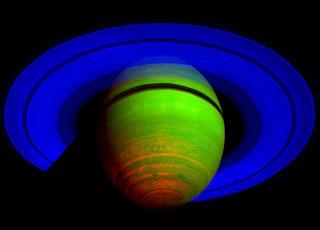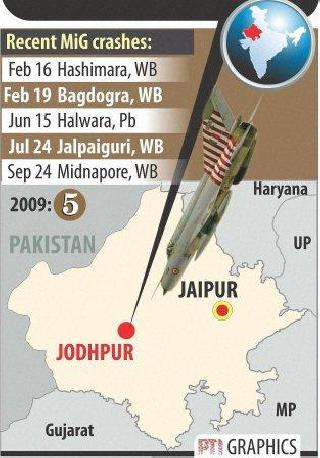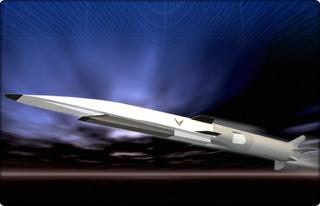
This false-color composite image, constructed from data obtained by NASA's Cassini spacecraft, shows Saturn's rings and southern hemisphere. Photo: NASA
PASADENA (BNS): Saturn's southern hemisphere consistently emitted more energy than its northern one, according to the observations done by NASA's Cassini spacecraft.
Saturn emitted gradually less energy each year from 2005 to 2009, just like a cosmic light bulb lights in a dimmer switch.
On top of that, energy levels changed with the seasons and differed from the last time a spacecraft visited Saturn in the early 1980s.
These never-before-seen trends came from a detailed analysis of long-term data from the composite infrared spectrometer (CIRS), an instrument built by NASA's Goddard Space Flight Center in Greenbelt, Marylnad, as well as a comparison with earlier data from NASA's Voyager spacecraft.
When combined with information about the energy coming to Saturn from the sun, the results could help scientists understand the nature of Saturn's internal heat source.
"The fact that Saturn actually emits more than twice the energy it absorbs from the sun has been a puzzle for many decades now," Kevin Baines, a Cassini team scientist at NASA's Jet Propulsion Laboratory, Pasadena and a co-author on a new paper about Saturn's energy output said.
"The Cassini CIRS data are very valuable because they give us a nearly complete picture of Saturn,” according to the research led by Liming Li of Cornell University in Ithaca, New York (now at the University of Houston), which was published in the Journal of Geophysical Research-Planets.
Saturn's flow of outgoing energy was lopsided, with its southern hemisphere giving off about one-sixth more energy than the northern one, Li explains.
This effect matched Saturn's seasons: during those five Earth-years, it was summer in the southern hemisphere and winter in the northern one. (A season on Saturn lasts about seven Earth-years.)
Cassini's observations revealed that the effective temperature in the northern hemisphere gradually dropped from 2005 to 2008 and started to warm up again by 2009. In the southern hemisphere, the effective temperature cooled from 2005 to 2009.
The emitted energy for each hemisphere rose and fell along with the effective temperature. Even so, during this five-year period, the planet as a whole seemed to be slowly cooling down and emitting less energy.
To find out if similar changes were happening one Saturn-year ago, the researchers looked at data collected by the Voyager spacecraft in 1980 and 1981 and did not see the imbalance between the southern and northern hemispheres. Instead, the two regions were much more consistent with each other.
"It's reasonable to think that the changes in Saturn's emitted power are related to cloud cover," Amy Simon-Miller, who heads the Planetary Systems Laboratory at Goddard and is a co-author on the paper said.
Scientists will be doing that as a next step by comparing the instrument's findings to data obtained by Cassini's imaging cameras and infrared mapping spectrometer instrument. The spectrometer, in particular, measures the amount of sunlight reflected by Saturn.
As scientists know the total amount of solar energy delivered to Saturn, they can derive the amount of sunlight absorbed by the planet and discern how much heat the planet itself is emitting. These calculations help scientists tackle what the actual source of that warming might be and whether it changes.
Better understanding Saturn's internal heat flow "will significantly deepen our understanding of the weather, internal structure and evolution of Saturn and the other giant planets," Li said.
The Cassini-Huygens mission is a cooperative project of NASA, the European Space Agency and the Italian Space Agency. The Cassini orbiter and its two onboard cameras were designed, developed and assembled at JPL.
 Previous Article
Previous Article Next Article
Next Article











The Indian Air Force, in its flight trials evaluation report submitted before the Defence Ministry l..
view articleAn insight into the Medium Multi-Role Combat Aircraft competition...
view articleSky enthusiasts can now spot the International Space Station (ISS) commanded by Indian-American astr..
view article